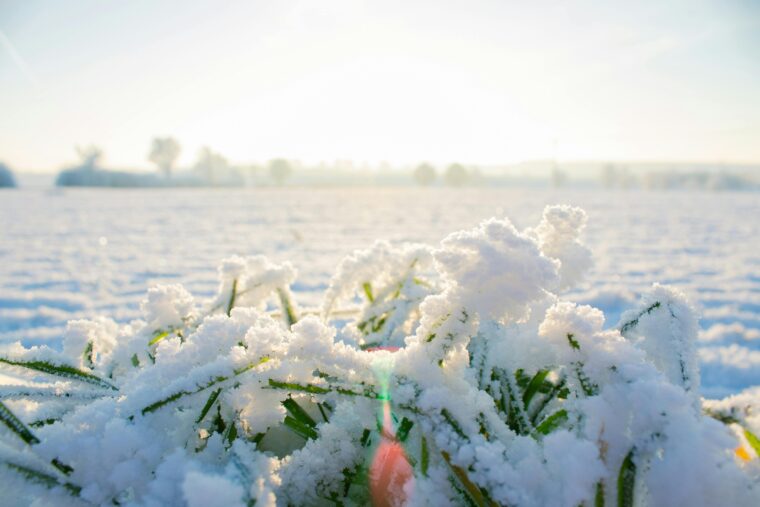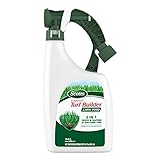“Keep Your Lawn Evergreen: Winter Care for Year-Round Beauty!”
Introduction
Winter lawn care is essential for maintaining a healthy and vibrant lawn year-round. As temperatures drop and frost sets in, grass enters a dormant phase, requiring specific care to ensure it emerges lush and green in the spring. Proper winter lawn care involves a combination of preparation and maintenance strategies, including aeration, fertilization, and debris removal, to protect the grass from harsh weather conditions. By understanding the unique needs of your lawn during the colder months, you can prevent common issues such as soil compaction, disease, and nutrient depletion, ultimately promoting a resilient and thriving lawn when the warmer seasons return.
Preparing Your Lawn for Winter: Essential Tips for a Healthy Spring
As the vibrant colors of autumn give way to the stark beauty of winter, homeowners often shift their focus from outdoor maintenance to indoor comfort. However, preparing your lawn for the cold months is crucial to ensure a lush and healthy landscape come spring. By taking a few essential steps, you can protect your grass from the harsh winter conditions and set the stage for a thriving lawn when the warmer weather returns.
To begin with, it is important to continue mowing your lawn until the grass stops growing. As temperatures drop, grass growth will slow, but it is vital to keep the blades at an optimal height. Cutting the grass too short can expose the roots to cold damage, while leaving it too long can invite pests and diseases. A height of about 2 to 2.5 inches is generally recommended, as this length provides adequate protection for the roots while minimizing the risk of matting under snow.
In addition to proper mowing, aeration is a key component of winter lawn care. Aerating your lawn in the fall helps to alleviate soil compaction, allowing air, water, and nutrients to penetrate the root zone more effectively. This process not only strengthens the grass but also enhances its resilience against winter stress. Aeration can be done using a manual or mechanical aerator, and it is best performed when the soil is moist but not overly saturated.
Following aeration, applying a high-quality fertilizer is essential to provide your lawn with the nutrients it needs to endure the winter months. A slow-release, winter-specific fertilizer with a balanced ratio of nitrogen, phosphorus, and potassium will support root development and improve the grass’s ability to store energy. This nutrient reserve will be crucial for a quick recovery and robust growth in the spring.
Moreover, addressing any lingering weeds is an important step in preparing your lawn for winter. Weeds compete with grass for nutrients and can become more problematic if left unchecked. Applying a pre-emergent herbicide in the fall can help prevent weed seeds from germinating, reducing their presence in the spring. Be sure to follow the manufacturer’s instructions carefully to avoid damaging your lawn.
As winter approaches, it is also wise to clear your lawn of debris such as fallen leaves, branches, and other organic matter. This debris can smother the grass, leading to fungal diseases and other issues. Regularly raking and removing debris will ensure that your lawn remains healthy and free from potential hazards.
Finally, consider the impact of foot traffic on your lawn during the winter months. Repeated walking or driving over frozen grass can cause significant damage, leading to bare patches and compaction. To mitigate this, try to limit activity on your lawn and create designated pathways for necessary movement.
In conclusion, preparing your lawn for winter involves a combination of proper mowing, aeration, fertilization, weed control, debris removal, and traffic management. By taking these proactive steps, you can protect your lawn from the challenges of winter and ensure a vibrant, healthy landscape in the spring. With careful attention and timely action, your lawn will emerge from the cold months ready to flourish, providing a beautiful and inviting outdoor space for you to enjoy.
Winter Lawn Maintenance: How to Protect Your Grass from Frost Damage
As the winter months approach, homeowners often shift their focus from vibrant gardens to the more subdued task of winter lawn maintenance. Protecting your grass from frost damage is crucial to ensuring a lush, healthy lawn come spring. Understanding the specific needs of your lawn during the colder months can make a significant difference in its resilience and appearance. While it may seem that grass requires less attention in winter, neglecting it can lead to long-term damage that is both costly and time-consuming to repair.
To begin with, it is essential to recognize the type of grass you have, as different varieties have varying levels of frost tolerance. Cool-season grasses, such as Kentucky bluegrass and fescue, are more resilient to cold temperatures, whereas warm-season grasses like Bermuda and St. Augustine are more susceptible to frost damage. Knowing your grass type will help tailor your winter care approach, ensuring that you provide the appropriate protection and maintenance.
One of the most effective strategies for protecting your lawn from frost damage is proper mowing. As winter approaches, gradually lower the cutting height of your mower. This practice helps the grass become more resilient to frost by reducing the surface area exposed to cold temperatures. However, it is crucial not to cut the grass too short, as this can weaken the root system and make it more vulnerable to frost. A balanced approach is key, maintaining a height that protects the roots while minimizing frost exposure.
In addition to mowing, aeration plays a vital role in winter lawn care. Aerating your lawn in the fall allows for better air circulation, water absorption, and nutrient penetration, all of which contribute to a stronger root system. A robust root system is essential for withstanding the stress of frost and cold temperatures. By aerating before the first frost, you give your lawn the best chance to thrive through the winter months.
Fertilization is another critical component of winter lawn maintenance. Applying a slow-release fertilizer in late fall provides your grass with essential nutrients that support root growth and overall health during dormancy. This practice not only helps the grass survive the winter but also ensures a quicker recovery and greener appearance in the spring. It is important to choose a fertilizer specifically designed for winter use, as these formulations are tailored to meet the unique needs of grass during colder months.
Watering is often overlooked during winter, but it remains an important aspect of lawn care. While the frequency of watering should decrease, it is essential to ensure that your lawn receives adequate moisture, especially during dry spells. Watering in the morning allows the grass to absorb moisture before temperatures drop at night, reducing the risk of frost damage. However, be cautious not to overwater, as excessive moisture can lead to fungal diseases and other issues.
Finally, minimizing foot traffic on your lawn during winter can prevent compaction and damage to the grass. Frost makes grass blades more brittle, and heavy foot traffic can cause them to break, leading to unsightly patches and increased vulnerability to disease. By limiting activity on your lawn, you help preserve its integrity and health.
In conclusion, winter lawn maintenance is a multifaceted process that requires attention to detail and a proactive approach. By understanding your grass type, adjusting mowing practices, aerating, fertilizing, and managing watering and foot traffic, you can protect your lawn from frost damage and ensure a vibrant, healthy landscape when spring arrives.
The Best Winter Fertilizers: Nourishing Your Lawn During the Cold Months
As the winter months approach, many homeowners may overlook the importance of maintaining their lawns, assuming that the cold weather will naturally halt any growth or activity. However, winter lawn care is crucial for ensuring a healthy and vibrant lawn come spring. One of the most effective ways to nourish your lawn during these colder months is through the use of winter fertilizers. These specialized fertilizers are designed to provide essential nutrients that support root development and overall lawn health, even when the grass appears dormant.
To begin with, it is important to understand the composition of winter fertilizers. Typically, these fertilizers are high in potassium and phosphorus, two nutrients that play a vital role in strengthening the root system and enhancing the lawn’s resilience against harsh winter conditions. Potassium, in particular, is known for its ability to improve the grass’s tolerance to cold temperatures and disease, while phosphorus aids in root growth and energy transfer within the plant. By applying a fertilizer rich in these nutrients, you are essentially fortifying your lawn’s foundation, allowing it to withstand the challenges of winter.
Moreover, timing is a critical factor when it comes to applying winter fertilizers. Ideally, the application should occur in late fall, just before the first frost. This timing ensures that the nutrients are absorbed by the grass while it is still active, allowing the roots to store energy for the winter months. As the ground begins to freeze, the grass will enter a state of dormancy, relying on the stored nutrients to maintain its health. Therefore, a well-timed application of winter fertilizer can make a significant difference in the overall vitality of your lawn.
In addition to timing, the method of application is equally important. It is recommended to use a broadcast spreader for even distribution of the fertilizer across the lawn. Uneven application can lead to patchy growth and nutrient imbalances, which may compromise the lawn’s health. Furthermore, it is advisable to follow the manufacturer’s instructions regarding the amount of fertilizer to use, as over-fertilization can lead to nutrient runoff and potential environmental harm. By adhering to these guidelines, you can ensure that your lawn receives the optimal amount of nutrients it needs to thrive.
Transitioning to the benefits of winter fertilizers, it is worth noting that their impact extends beyond the immediate winter months. A well-fertilized lawn in winter will emerge stronger and greener in spring, with a robust root system that supports healthy growth. This early advantage can reduce the need for additional fertilizers and treatments later in the year, ultimately saving time and resources. Additionally, a healthy lawn is more resistant to weeds and pests, further contributing to its long-term maintenance.
In conclusion, while winter may seem like a time to pause lawn care activities, it is, in fact, an opportune moment to invest in your lawn’s future health. By selecting the right winter fertilizer and applying it correctly, you can provide your lawn with the nourishment it needs to endure the cold months and flourish in the spring. This proactive approach not only enhances the aesthetic appeal of your property but also promotes a sustainable and resilient lawn ecosystem.
Conclusion
Winter lawn care is essential for maintaining a healthy and vibrant lawn year-round. Proper preparation and maintenance during the colder months can prevent damage and ensure a lush, green lawn in the spring. Key practices include aerating the soil to improve drainage, applying a winter-specific fertilizer to provide necessary nutrients, and keeping the lawn free of debris to prevent mold and disease. Additionally, mowing the grass to the appropriate height before the first frost and minimizing foot traffic can help protect the lawn’s structure. By taking these steps, homeowners can safeguard their lawns against the harsh winter conditions and promote robust growth when warmer weather returns.












